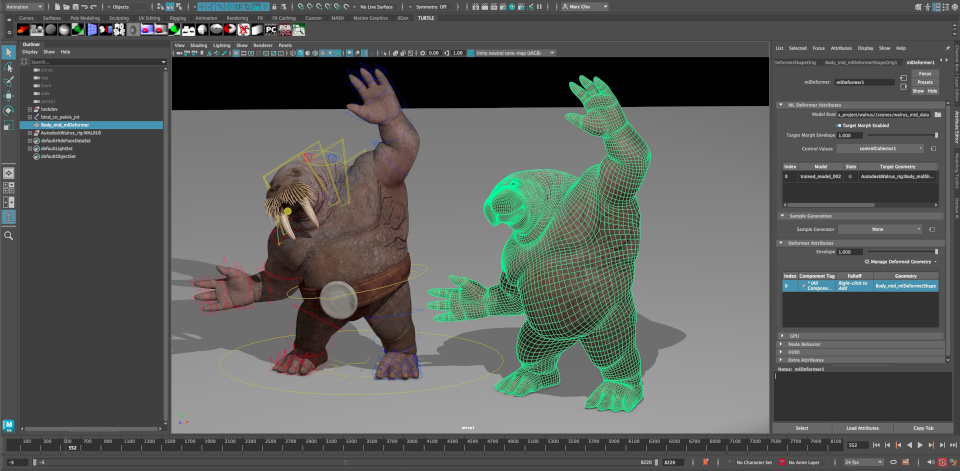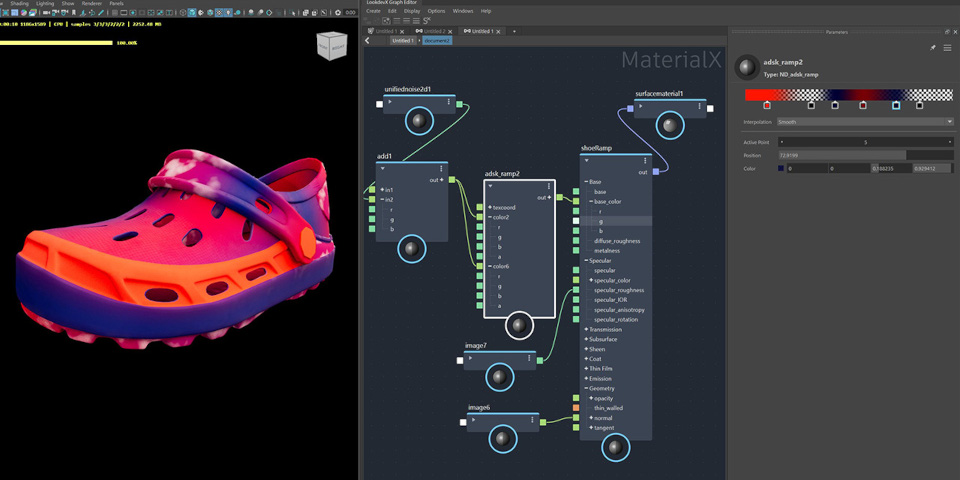Check out the new ML Deformer in Maya 2025.2

Autodesk has released Maya 2025.2, the new version of its 3D software for visual effects, animation and game development, and Maya Creative 2025.2, its cut-down edition.
The updates add a new machine-learning-based ML Deformer for generating fast, interactively poseable approximations of the output of complex character rigs.
There are also updates to the accompanying LookdevX, Arnold for Maya and USD for Maya plugins, including the option to import USD blendshapes into Maya.
ML Deformer creates interactively poseable approximations of complex rigs
Like its namesake in Unreal Engine, Maya 2025.2’s new ML Deformer uses machine learning to create a fast approximation of complex deformations.
It enables users to take characters with complex, slow-to-process rigs and train the deformer to represent the deformations they generate in the character mesh.
An animator can then work more interactively with the machine-learned approximation, before switching back to the original at render time.
Intended for background and crowd characters
The ML Deformer learns from an animation sequence that provides a range of motion of the target geometry, which can consist of motion-capture data, keyframe animation, or random motions generated by the deformer’s built-in Pose Generator functionality.
It is possible to train multiple different models and switch between them, with a Training Results window helping to assess the effectiveness of the trained AI models.
You can read more about the workflow and the current known limitations of the deformer in the online documentation: Autodesk recommends it for characters “where precision isn’t critical”, like background and crowd actors.

Updates to LookdevX, Arnold for Maya and USD for Maya
The ML Deformer is the only new feature in the core application listed in the release notes, but Maya 2025.2 also includes updates to several of the accompanying plugins.
Material authoring and look development toolset LookdevX for Maya 1.5.0 features a new Ramp node (shown above) and better viewport display of Arnold materials.
The integration plugin for Arnold itself has also been updated, with Arnold for Maya 5.4.2.1 supporting the new features from Arnold 7.3.2, including toon tone-mapping.
USD for Maya 0.29, the latest version of Maya’s USD workflow plugin, now supports the import of USD blendshapes.
There are also a number of workflow improvements, including the option to copy and paste USD prims in Maya’s Outliner, and new options for USD export.
Maya Creative 2025.2 also released
Autodesk has also released Maya Creative 2025.2, the corresponding update to the cut-down edition of Maya aimed at smaller studios, and available on a pay-as-you-go basis.
It includes the same new features, including the ML Deformer.
Price and system requirements
Maya is available for Windows 10+, RHEL and Rocky Linux 8.7/9/3, and macOS 12.0+.
The software is rental-only. Subscriptions cost $235/month or $1,875/year.
In many countries, artists earning under $100,000/year and working on projects valued at under $100,000/year qualify for Maya Indie subscriptions, priced at $305/year.
Maya Creative is available on a pay-as-you-go basis, with prices starting at $3/day, and a minimum spend of $300/year.
Read a full list of new features in Maya 2025.2 in the online documentation
Have your say on this story by following CG Channel on Facebook, Instagram and X (formerly Twitter). As well as being able to comment on stories, followers of our social media accounts can see videos we don’t post on the site itself, including making-ofs for the latest VFX movies, animations, games cinematics and motion graphics projects.
